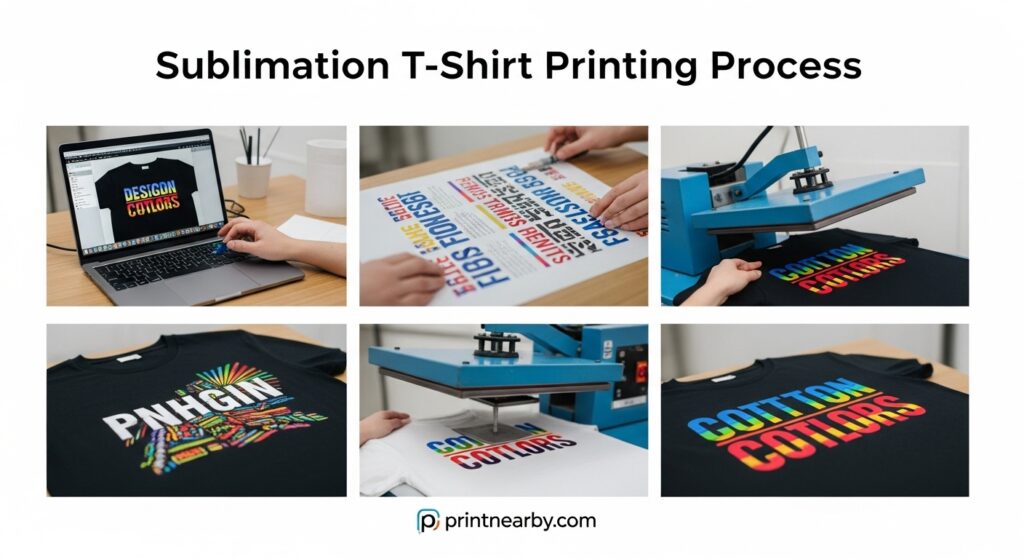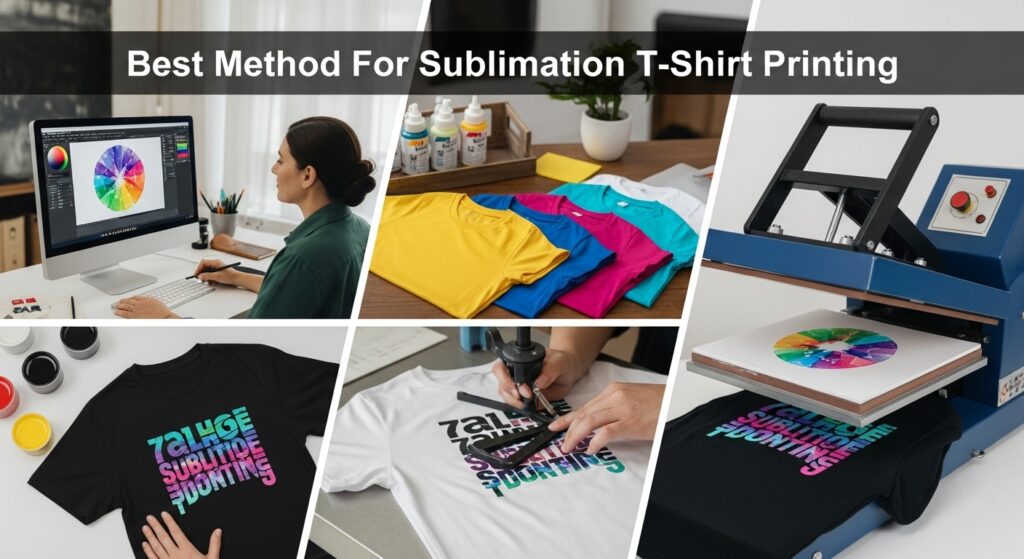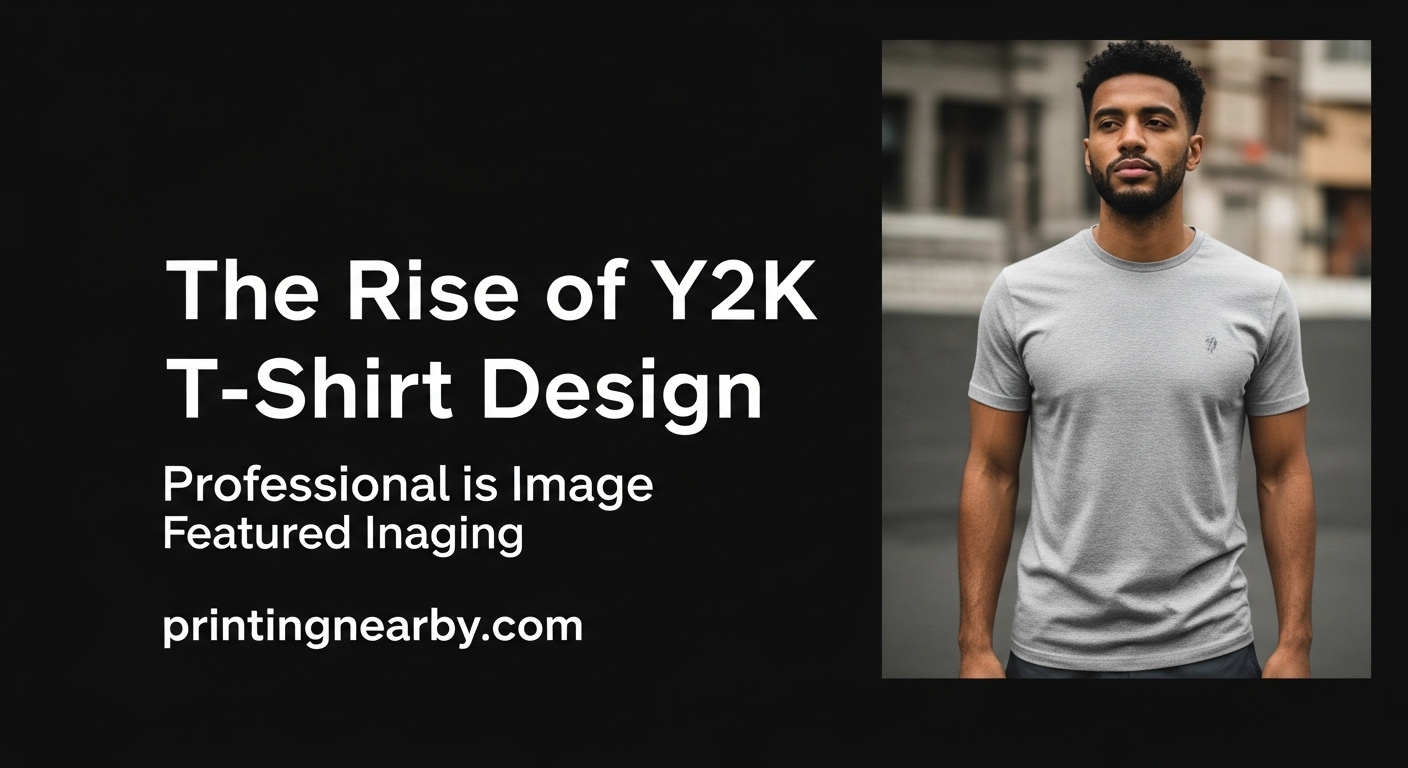
Custom t-shirts are booming—and so is the demand for vibrant, durable prints. If you’re exploring methods to create long-lasting, full-colour designs, sublimation t-shirt printing should be on your radar. Whether you’re a small business owner, a fashion designer, or a DIY print enthusiast, understanding the sublimation t-shirt printing process can give you an edge in today’s competitive apparel market.
This guide walks you through how sublimation printing works, its pros and cons, and how to use it effectively for your brand or project.
1.Best Method for Sublimation T-Shirt Printing:

2. What Is Sublimation T-Shirt Printing?
Sublimation is a digital printing technique that uses heat to transfer dye directly into polyester fabric.
Unlike other methods that apply ink on top of the fabric, sublimation bonds the dye into the fibers. This results in a design that won’t crack, fade, or peel—even after many washes.
3. How the Sublimation Printing Process Works
The sublimation process involves three simple steps:
- Print the design on special sublimation paper using sublimation ink.
- Place the paper face-down on a polyester t-shirt.
- Apply heat and pressure using a heat press (around 380–400°F or 195–205°C).
The heat turns the ink into gas, which fuses with the fabric.
4. Why Choose Sublimation Over Other Printing Method
Sublimation offers several advantages over techniques like screen printing or heat transfer vinyl:
- No cracking or fading
- Lightweight, “no feel” finish
- High-definition full-colour designs
- Ideal for all-over prints
It’s especially great for athletic wear, promotional shirts, and artistic apparel lines.
5. Best T-Shirt Materials for Sublimation Printing
Sublimation only works well on 100% polyester or polyester-blend fabrics. Cotton and dark-colored fabrics do not absorb the sublimation dye properly.
Ideal choices include:
- White polyester t-shirts
- Polyester sportswear or dri-fit tees
- Performance or moisture-wicking apparel
Tip: Use high-polyester blends (at least 65%) for semi-vibrant results if you want a softer shirt than pure polyester.
6. What Kind of Designs Work Best With Sublimation?
Sublimation is perfect for:
- Photo-quality images
- Gradients and fine detail
- All-over or edge-to-edge designs
Avoid using it for solid colors on dark garments or designs that require exact placement (like a chest logo on a black shirt).
Example: A streetwear brand printing galaxy-themed tees or a sports team with all-over jersey graphics.
7. Equipment Needed for Sublimation T-Shirt Printing
To get started with sublimation, you’ll need:
- Sublimation printer (e.g., Epson Sure Colour, Sawgrass SG1000)
- Sublimation inks
- Sublimation paper
- Heat press machine (not an iron!)
- Polyester t-shirts
Optional:
- Heat-resistant tape
- Teflon sheet or blowout paper to prevent ink bleed
8. Pros and Cons of the Sublimation Printing Process
✅ Pros:
- Vivid, professional-quality colors
- No feel or texture on the shirt
- Extremely durable
- Great for large or all-over prints
❌ Cons:
- Only works on polyester/light-colored fabrics
- Requires special equipment and ink
- Not ideal for small, single-color jobs
9. Sublimation vs Other Printing Techniques
| Technique | Works On | Best For | Durability |
| Sublimation | Polyester | Vivid, all-over prints | ⭐⭐⭐⭐⭐ |
| DTG | Cotton | Small-batch, full-color prints | ⭐⭐⭐⭐ |
| Screen Printing | Cotton & blends | Bulk orders, simple designs | ⭐⭐⭐⭐ |
| Heat Transfer | All fabrics | Low-volume, quick custom prints | ⭐⭐ |
| Vinyl Transfer | All fabrics | Names/numbers, personalization | ⭐⭐⭐ |
10. Tips for Better Sublimation Results
Want flawless sublimated t-shirts every time? Follow these expert tips:
- Pre-press shirts for 5 seconds to remove moisture
- Use heat-resistant tape to prevent shifting
- Avoid pressing too long, or colours may fade
- Keep the press clean to avoid ghosting or ink transfer
Pro Tip: Test a sample shirt before printing in bulk—different poly blends absorb ink differently.
11. Is Sublimation Printing Right for Your Business?
Sublimation is a great fit if you:
- Sell performance or polyester-based apparel
- Need vibrant, all-over prints
- Want to offer durable and professional-quality shirts
- Prefer digital printing with low waste
But if you focus on dark cotton shirts, screen printing or DTG may be better alternatives.
Example: Fitness brands, esports merch lines, and artistic t-shirt startups can all benefit from sublimation.
Final Thoughts: Mastering the Sublimation T-Shirt Printing Process
The sublimation t-shirt printing process offers endless creative possibilities—if you have the right setup and materials. It’s fast, clean, and delivers eye-catching results that customers love. Whether you’re printing shirts for a sports team, launching an online shop, or creating personalized gifts, sublimation can take your printing game to the next level.
FAQs: Quick Answers About Sublimation T-Shirt Printing
Q1: Can I use sublimation on cotton shirts?
A: No. Sublimation doesn’t bond with cotton fibers—it only works on polyester.
Q2: Is sublimation better than screen printing?
A: It depends. Sublimation is better for photo-quality prints on polyester; screen printing is better for bulk cotton tees.
Q3: What’s the average cost to get started with sublimation printing?
A: Around $500–$2,000, depending on your printer, press, and supplies.
Q4: Do sublimation prints fade over time?
A: Not if done properly. Sublimation prints are highly durable and wash-resistant.



